How I set up a gun for field target…
Hi everyone. This article is going to show you how I set up a gun for field target competition. Specifically, for Hunter Field Target. There are different classes in field target, and Hunter is by far the most popular class. It’s also where I’d recommend starting out if you’re new to field target. I wrote a previous article explaining the basics of field target, including a quick explanation of the different classes. You can find that article by clicking THIS LINK. The thumbnail below is to the full length video that accompanies this article. I suggest taking them both in for the full story.
While technically any caliber is legal for HFT (Hunter Field Target), by far the most common caliber is .177. Whatever caliber you choose, the power limit for HFT is 20 ft-lbs. The very first thing I do is my pellet testing and power tuning. I get as many samples of potential pellets from as many different lots as I can obtain. Then it’s off to the indoor 100yd range where the environment is a negligible influence. I’ll spend a day or more trying different pellets at different speeds until I find the most accurate combination possible. This is also a good time to test any moderators or air strippers or other accessories for their effect on accuracy. Once I’ve got my best pellet at the best speed (under 20 ft-lbs), it’s on to the scope.
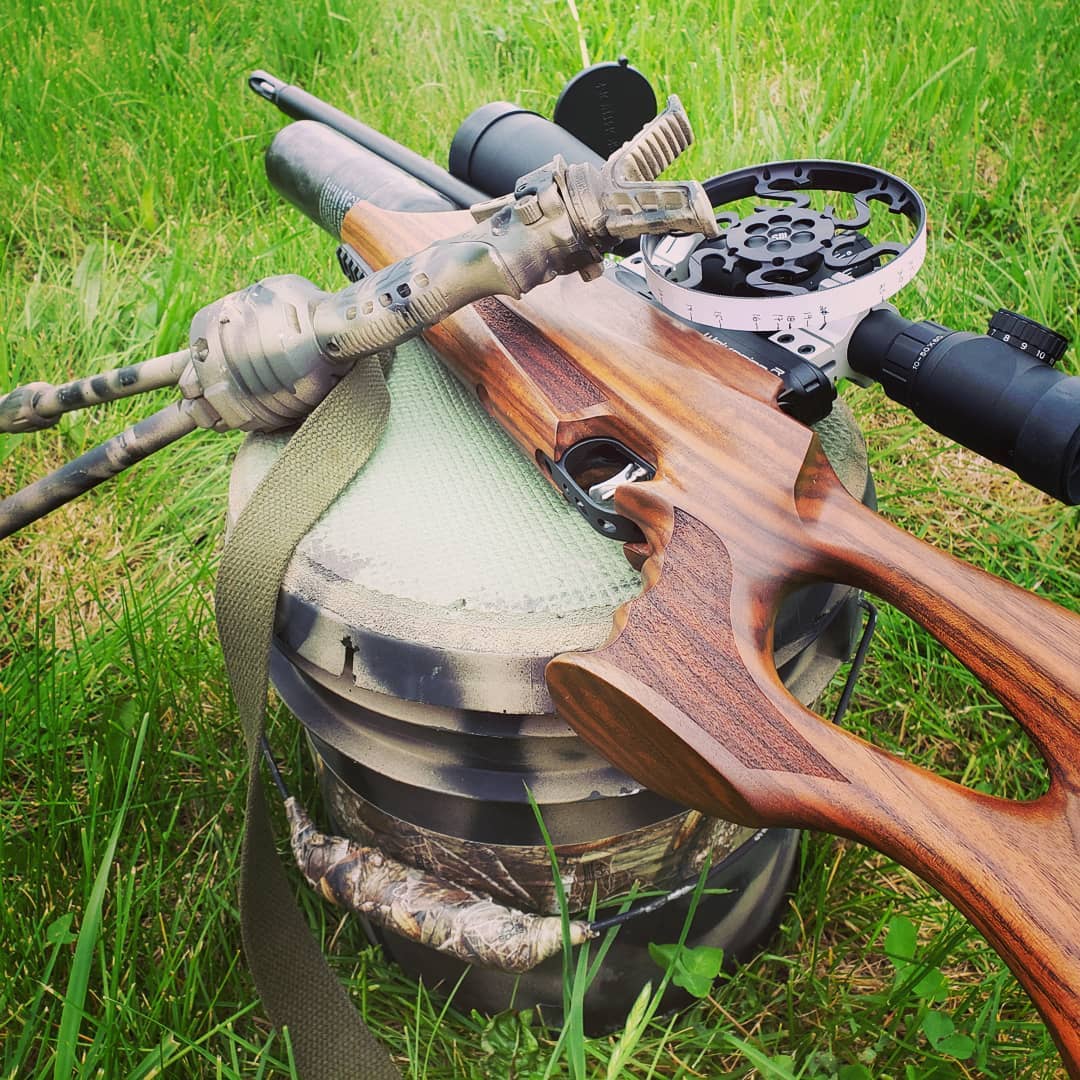
Your scope choice is at least equally as important as your gun or pellet choice in HFT. I would highly recommend getting the best scope that you can. Make sure you get one with a graduated reticle (dots or hashes) that has a 10 yard minimum parallax with side focus. While the side focus isn’t an absolute requirement, I would strongly suggest you avoid adjustable objective types. This article will only cover side focus type scopes. The magnification limit for HFT is 16X. If your scope doesn’t have a 16X mark, it must be set on the next lowest number. I’d also make sure your scope has the 16X printed on it.
For the remainder of the setup we will need a known distance range from 10 to 55 yards. At minimum, I suggest you make sure you have the following yardages available: 10, 11, 12, 13, 14, 15, 16, 17, 18, 19, 20, 25, 30, 35, 40, 45, 50, 55. At short distance, every yard is critical. Past 20 yards, you can get away with every 5 yards…but the more precise your ranging and doping…the more precisely you can place your shots. The actual target I use is a printable focus chart. It’s great for ranging and has a million precise aiming points.
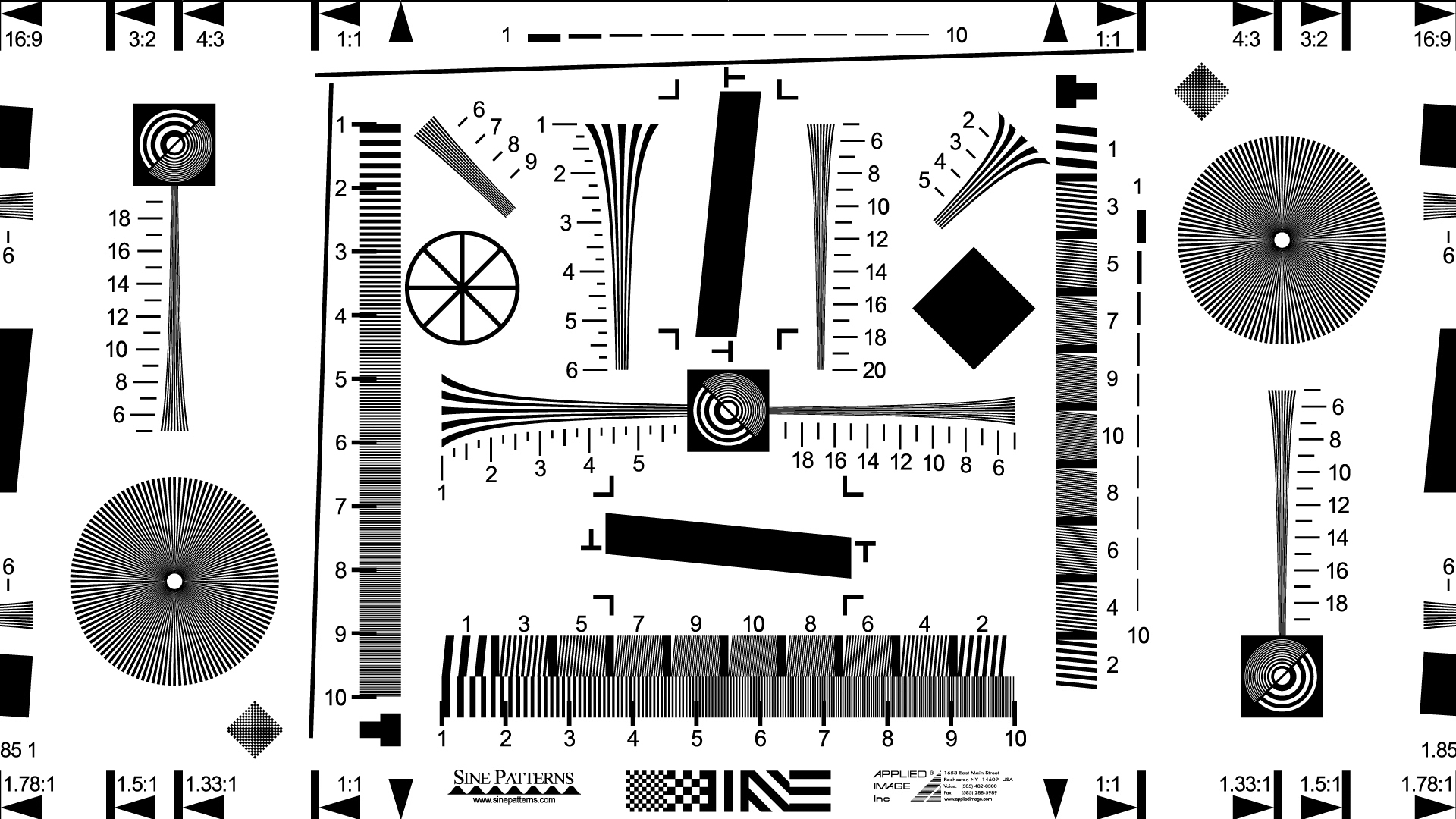
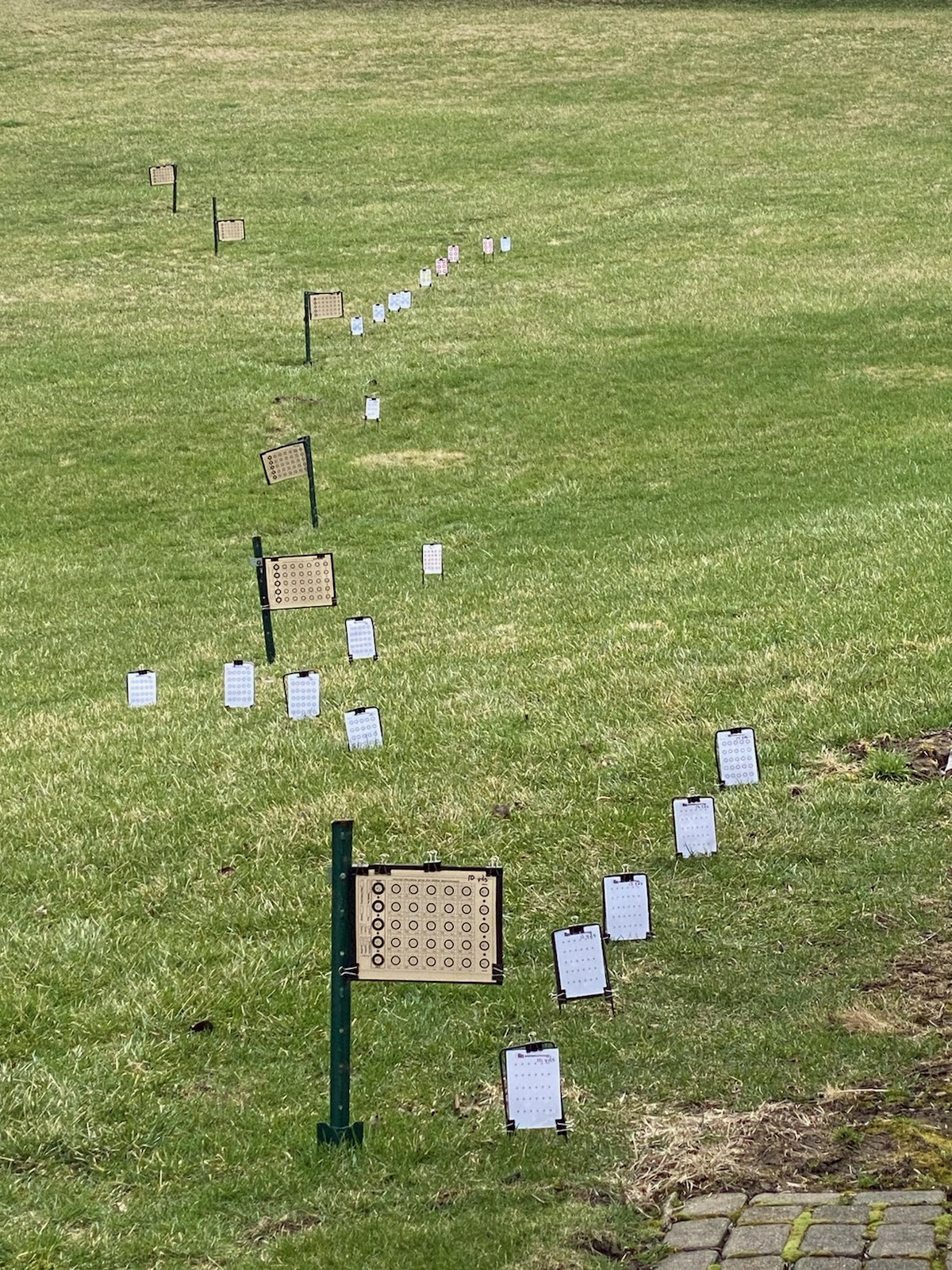
Next, you’ll want to wrap your parallax wheel with tape that you can write on. This is how you will range targets and you need to be precise. The pre-printed ranges on the scope or wheel are not accurate enough. We will put our own ranges on the taped wheel with a pen or marker. See my wheel in the picture above. You must also choose a “pointer” for the wheel. Some scopes come with them, but I typically use some point on my rear ring as a pointer. As long as you have a repeatable point, you’re good.
You are not allowed to adjust your scope turrets at all during a match in Hunter class. Therefore, you must use “holdover.” This means that you use a point other than the middle of the crosshairs for different yardages. While apps like Chairgun or Strelok can give you an idea of your trajectory and holdovers, there is no substitute for doing it manually. I start by zeroing the gun at 20 yards. This is only a starting point. By the end of the process I may change this. We’ll discuss that more later. Not only do I zero at 20 yards, I also mark my parallax wheel. You must adjust your wheel until you are parallax free. Then put a mark on your wheel that coincides with your pointer and write 20 next to it. Congratulations! You have just ranged and doped your first yardage.
Since you’re not going to remember your dope for every yardage…you better write that down. You need to create a dope chart. There are many ways to do this. My preference is a diagram style chart. I draw my reticle and then write in the yardages wherever they go on the reticle. In contrast, my boss Dennis Baker uses more of a written chart. You can see examples of each below. Either one works fine.
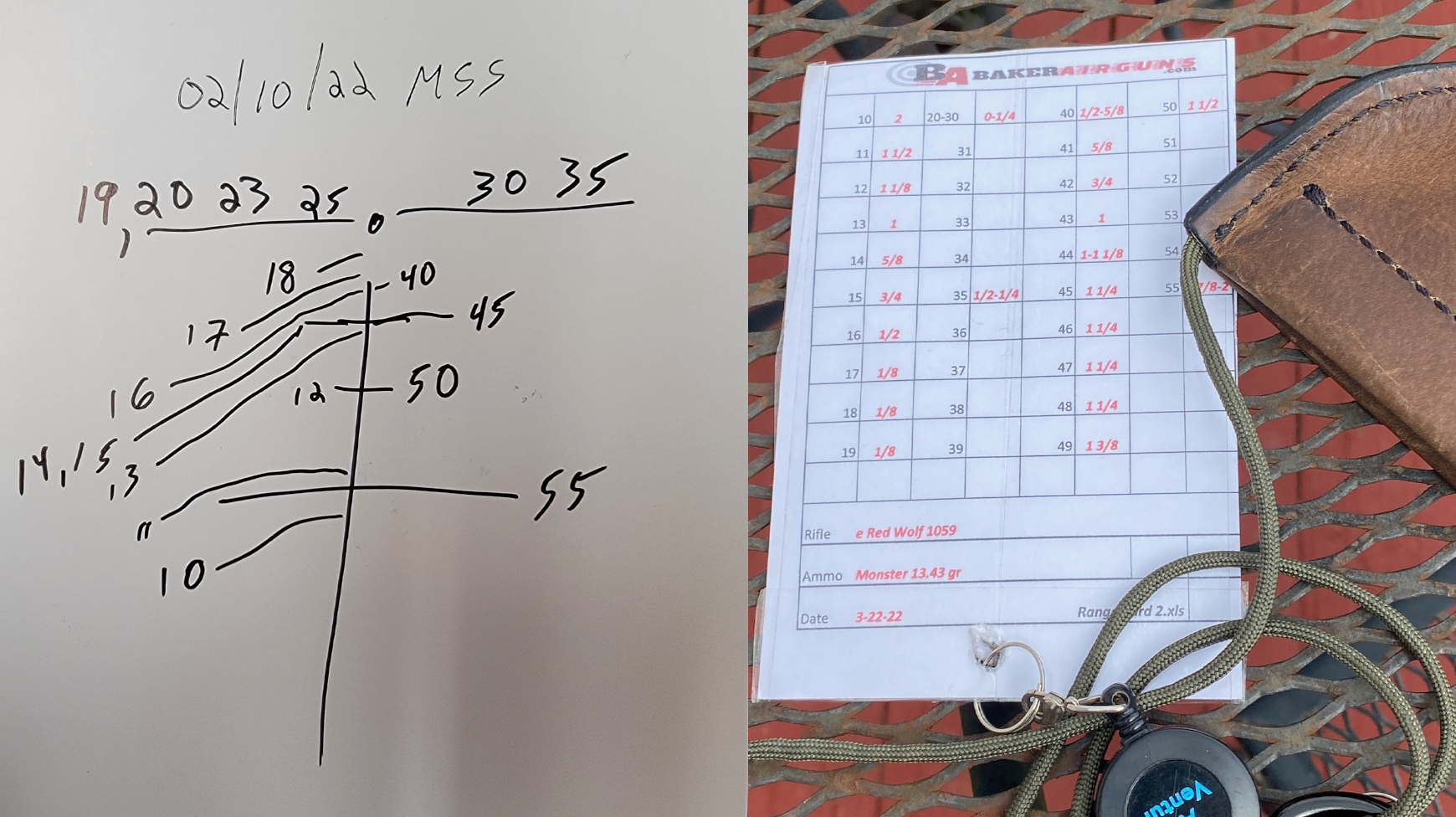
I now move to 10 yards. I will aim the center of the crosshairs on a small target and shoot a group. That group will not be where I was aiming. It will be lower. While still aiming at the same spot, count how many graduations low the group hit. This will be your holdover point for 10 yards. Now try taking a few shots using that holdover point. If it’s going where you’re aiming, write this down on your dope chart. You’ll also want to mark your yardage on your parallax wheel while you’re here. Now do this for every yardage listed above, and even more if you’re willing and able.
During this process, you might run into a situation where you have to hold UNDER. This is perfectly normal. Your point blank zero controls this. If you don’t want to hold under at all, you can adjust your zero to the peak of the pellet’s trajectory…meaning whatever yardage was highest. After that, all of your holds will be over. This is a matter of preference.
With your wheel ranged from 10-55 yards, as well as your dope chart marked for the same, you are now ready to get out and practice. You may find that small adjustments need to be made to either along the way. Don’t be afraid of this, but make sure it’s not the environment causing the deviation. Indoors is the very best place to do this, but a calm day outside works pretty good as well. Don’t try to do this in variable 20mph winds. Once you’re confident in your wheel and dope chart, you’re now ready to shoot a field target competition. Have fun, and be safe.
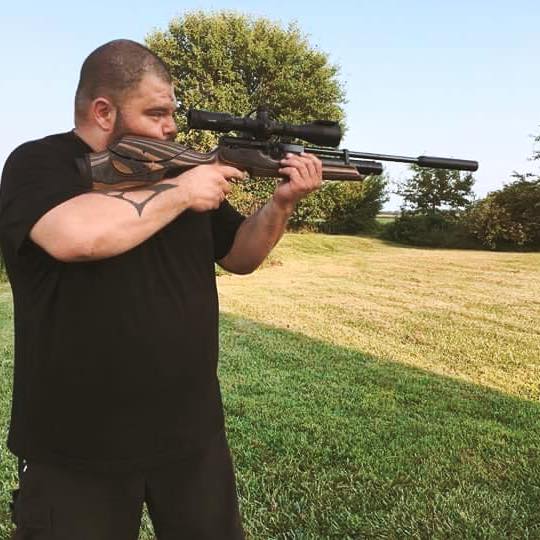
Donnie Reed is our Sales/Product Manager and general airgun guru here at Baker Airguns. He was a member of the U.S. Marine Corps, and qualified as both a Rifle Expert and Pistol Expert. Donnie is now a competitive airgun shooter, focusing primarily on field target and benchrest competitions. He has won both PCP and piston class field target matches, as well as local benchrest competitions. Donnie also runs the Youtube channel and Facebook group ALL THINGS AIRGUN. His first college degree is in Mathematics and Sciences, but he is still pursuing another in Physics and Astronomy.

